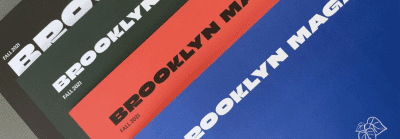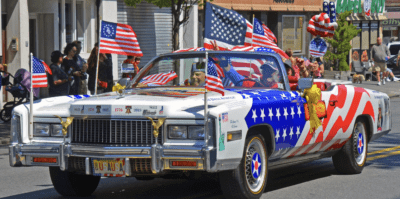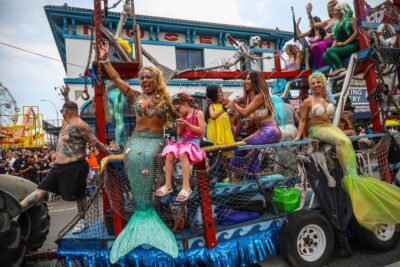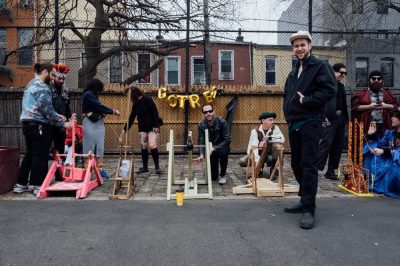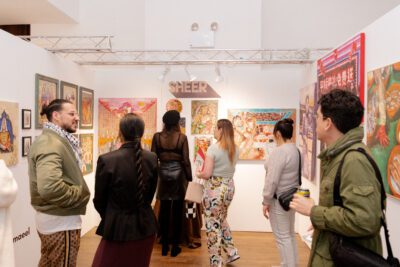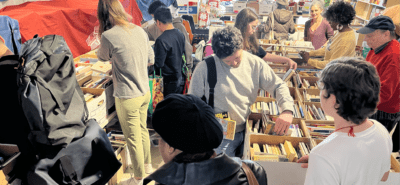Woody Allen Does TV: Talking With Crisis In Six Scenes‘s Rachel Brosnahan
It’s been an exciting couple of years for Rachel Brosnahan, who was credited in the pilot of the Netflix smash House of Cards simply as ‘Call Girl’. Her performance in that role would prove essential to the show, adding first a character name, before continuing to appear in the series throughout its first three seasons, eventually earning a dynamic plotline, a signature role, and, oh yeah, an Emmy nomination.
Brosnahan now has even bigger bites on her plate. The 25-year-old actress has shown up in films—last year’s indie James White and Disney adventure The Finest Hours earlier this season—along with taking on a starring role in the first two seasons of the underrated WGN America series Manhattan, produced by West Wing alum Thomas Schlamme. She’s recently been cast as the lead in Gilmore Girls creator Amy Sherman-Palladino’s upcoming Amazon series The Marvelous Mrs. Maisel, and, starting on September 30, those same Amazon subscribers will get another taste of the young actress, as she takes on a “dream” part in Woody Allen’s long-awaited series, Crisis In Six Scenes
I’ve been lucky enough to see a screener of the opening episode of the six-part series, and it’s quintessential Allen. For those who have seen the 80-year-old director’s 2011 Oscar-winning hit Midnight In Paris, I feel similar vibes between Rachel McAdams’s Midnight performance and Brosnahan’s in Crisis. I had the opportunity to sit down with the rising actress a few weeks ago at Manhattan’s Crosby Street Hotel during Crisis’s press day, where we talked about Allen, House of Cards, Miley Cyrus, and parallel issues that we’re facing both today as well as in the show’s 1960’s setting.
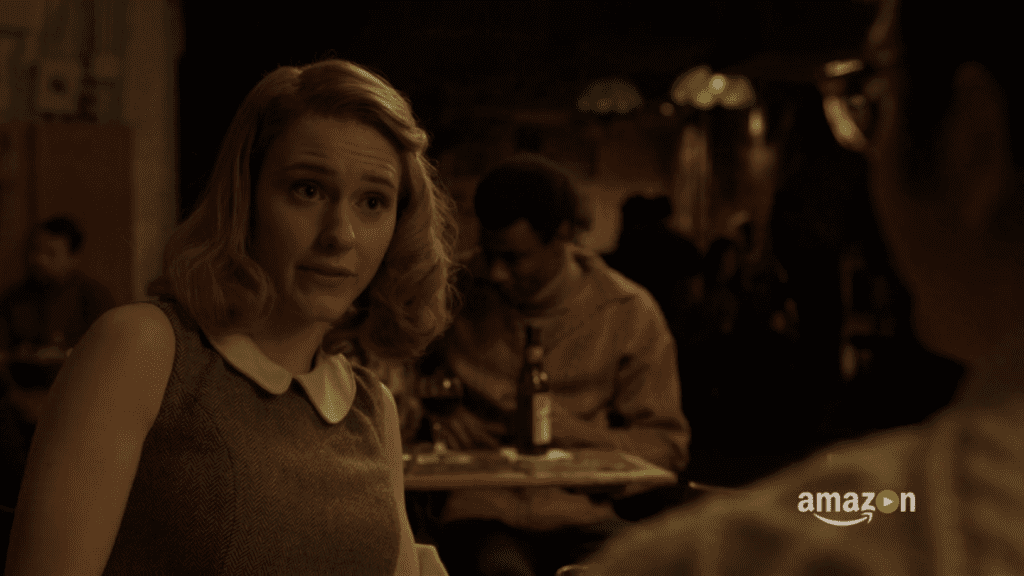
Brooklyn Magazine: Obviously, the first question, I have to ask you: What was it like working with Woody on Crisis In Six Scenes?
A dream. I mean, obviously this is the question that everybody asks, and there really aren’t words to describe how surreal it is. I mean, watching Woody’s movies growing up was extremely influential in my wanting to become an actor. I’m still not sure that I fully made that connection at this point—it was surreal. And also for him to be acting in it as well; I’ve admired him as a filmmaker and as an actor. I think he’s a wonderful actor, and it was just a thrill to be able to watch him wear all of those different hats.
Especially since he hasn’t really done much on-screen stuff in the past several years.
Exactly. And, you know, he’s getting older, and still has so much energy. It’s extraordinary, and it’s inspiring to see someone who I’ve admired for so long continually be inspiring himself. I think it’s interesting that he still feels this intense drive to create. I hope that I have that kind of drive when I’m that age. I hope I’m still feeling up to it when I’m that age. It’s really amazing what he’s doing.
Do you have a favorite Woody movie or performance?
I love Annie Hall. It’s my parents’ favorite movie; I think it’s the first Woody movie I saw. I’ve always loved Annie Hall.
A lot of his characters can be similar to one another. Was there a character that you felt yours related to?
You know, no. I don’t tend to make those connections in general, but it was definitely a type of person that I recognized. She’s conservative, but educated—which I’m not sure today we associate with one another so much (laughs). But particularly back then, I think that was very prominent. If you went to college, especially as a woman, you were fairly well off, and in colleges they didn’t teach such a wide array of worldviews. You learned everything very much from one side, and that was the right side. Although I don’t agree with many of this character’s viewpoints, I understand how she arrived there and she’s very, very smart and articulate about it. But her worldview is fairly narrow, and I think that’s something that’s explored a lot in this project, that she and some of these other characters realize, perhaps, that their worldviews are narrower than they thought.
It’s almost strangely topical, given today’s current events, and the show’s setting during the war protests of the ‘60s. Is that a parallel that you realized when you were reading or filming?
100%. I think that’s kind of where the comedy lies—in that these conversations are so recognizable that it’s hard to believe that they were being had so long ago, and we’re still having conversations that are exactly the same. I think that’s something that Woody highlights beautifully through this project. It’s like holding up a funhouse mirror to our current world. It’s slightly distorted, but the idea is the same. It’s scary how little has changed, but also how so much has changed. We’ve made a lot of progress in some ways, and very little in others, and I think that’ll be a conversation that’s re-brought up through watching this project.
Working with six half-hour episodes for the show, did it feel more like you were doing TV, a movie, or something in between?
It felt like a movie. It was shot exactly like a movie, not split into episodes, and we shot the whole thing in five or six weeks. It’s a Woody Allen project. I think, you know, that’s held up on such a high pedestal that you would expect, maybe, that it feels like an inaccessible set, or maybe even a cold set, and it could not have been more of the opposite of that. Some of my favorite experiences working in film and television have been these micro-budget indie films, where there are no trailers. Everybody’s living in a motel, and you’re there because you’re creating something special, and this had a lot of those same qualities. We spent time in a holding room together, in a room just like this, all sitting in chairs, spending time together—which is much rarer than you think, especially on some of these larger-budget, studio films. And that was really nice. It felt like a family.
So, I guess kind of the opposite of a micro-budget project was House of Cards, which you had a big role on. That’s another high-profile TV show, obviously very different in tone and character, but was there anything that you were able to carry over from one experience to the other?
Absolutely. Mostly, just about the different ways that I work and that other people work. I cut my teeth, in a lot of ways, on House of Cards, and god, I learned so much. I had been so spoiled, and didn’t know it then, because even though it’s some of the most incredible actors and directors, people were so kind. And that sounds like such a simple thing, but it makes a world of difference. It’s intense, and it’s stressful, but when people are kind, everything is easier. And this set was so full of that. Woody was so generous and kind, and it bled outward, across this set. I think it helped that we were home by dinner almost every night (laughs). He works quickly—there’s no extraneous energy being spent.
And on House of Cards you also worked with another living legend director, as David Fincher directed the pilot. How did the experiences compare? I know David does a lot of takes…
Yeah. That’s probably the most tangible difference: there were scenes that were shot in this show where we did one take. Literally. For Woody, it’s because he trusts his actors. I didn’t work very much with David Fincher; really, only in the pilot, and it was only a couple of scenes for me. So, I can’t speak as an expert on working with David Fincher. But in my limited experience with him, I think in a different way, he also trusts his actors to show all of the colors that are necessary for him to find the performance he’s looking for, and so those multitudes of takes, in a way, serve the same purpose. I’m not sure that either of them would say that about the other. It’s just different approaches to getting the same thing, and it’s been so important to be able to see how all of these different prolific directors work.
It’s almost like a TV ‘revolution’ right now, where people from the film world are making great TV, and you’ve gotten to be in a few of those projects.
TV is kind of the place to be, and particularly for women. I feel like there are more exciting roles being written for women in TV right now, and it’s that longform storytelling, you know? How many times have you seen a movie end, and you go, God, I wonder what happens to that person? Well, now, the movie people, who are doing those films, are making TV, and you get to see. I know that Fincher and the House of Cards crew always said, House of Cards”“ is a 13-hour-long movie”. It’s not a television show. And I think it has that feeling, and I think this is a very similar feeling as well.
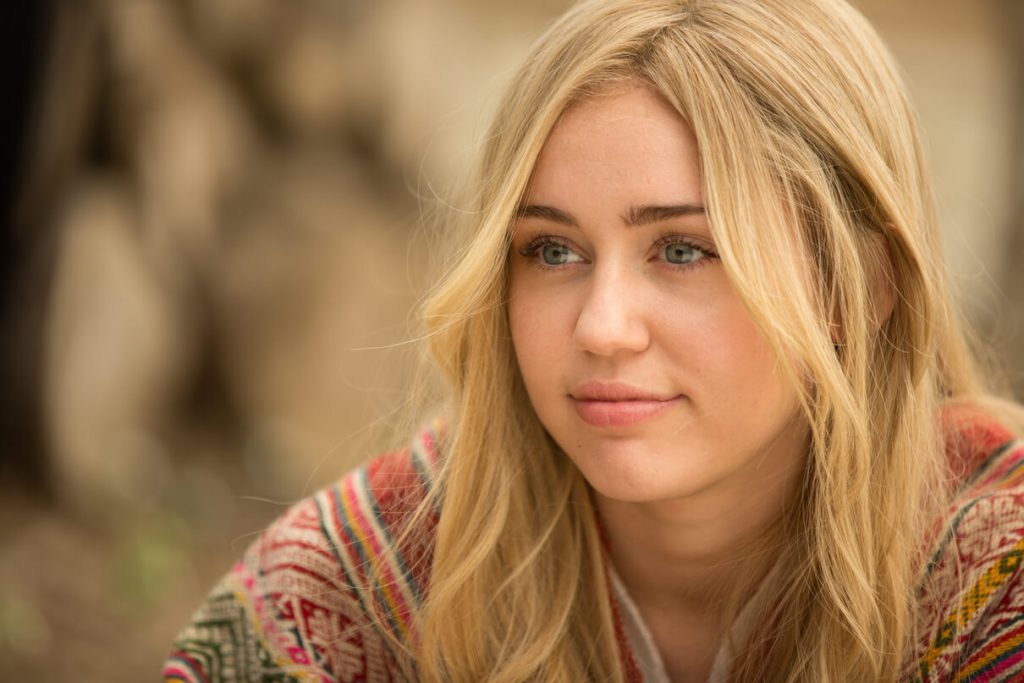
What was it like working with Miley Cyrus?
I didn’t work with Miley very much. Our characters are sort of on opposite sides of John’s. We only really had one scene that we’re in together, but I did get to spend some time with Miley, in hair and makeup, as I was coming in and she was coming out, or during camera tests, and she’s wonderful. She works so hard, and she’s so passionate about the things that she commits her time to. She’s such an icon at this point, and we see her from the outside, but she’s so down to earth. She really is, and I’m so glad that I got to meet and spend a little bit of time with her. I’ve not seen this, but I hear that she was just wonderful to work with, that she’s wonderful, and how fun and how lucky are we to pull her out of music for a second to get her back on screen?
Of course. And while Miley’s had a five year or so break from acting, Elaine May’s been out of the game for 15 or 16 years. You had a few scenes together in the pilot, I’m sure there’s more to come. What was it like working with her?
She’s extraordinary. What an extraordinary woman and talent. I can’t believe that she agreed to do this—I mean, it’s hard work. And it’s the same thing: they’re not young, and this is a lot to ask. And she is so funny. My god. In her lines, the little changes that she made, the little improvs that she did, I think, really bring this to life. Really make this thing, and the chemistry between her and Woody is extraordinary. I mean, it’s outstanding. God, how cool.
It felt almost like a play at times, too.
That’s exactly it. So much of this felt like a play, and without giving anything away, particularly the end of this felt like we did a one-act play. And how cool to be able to do that on camera with these people? Elaine and I, it turns out, are neighbors, and we rode together to set when we were both working, and she’s just hilarious. She’s a real character.
There are so many other cast and contributors to this, too. Michael Rapaport, Becky Ann Baker, Lewis Black, David Harbour… having all these actors in smaller roles, what was it like having such a huge, wide-ranging, talented cast from top to bottom?
Oh my gosh. Thrilling, the dream—I’m repeating all the same words, but it’s true, and I mean them 100%. My gosh, to have that much talent in a room together, I feel like the roof is going to blow off. It wasn’t a very big house, and to watch them say single lines, and obviously there are so many characters that, I think many of us hardly interacted with them. Elaine and Woody did, but John and I really didn’t so much, and there’s a part at the end where many of us meet who haven’t met before, and to watch them say singular lines that bring the house down, and we’re just trying not to laugh behind the monitor.
I mean, these are all people who are brilliant in their own right, and brilliant at what they do, and they all got shoved together in one room to make a giant ball of brilliance, and we all got to witness it. And I think one of the things that is so cool about Woody’s movies is that you remember those characters. You remember all of them. These characters that have one line. You’re like, Oh, right! The news guy down the street! He’s my favorite! He gives voice to everyone, which I think is truly unique.
Crisis In Six Scenes will debut all six episodes on Amazon Prime Video this Friday, September 30.
Photos courtesy of Amazon Studios.
You might also like 















